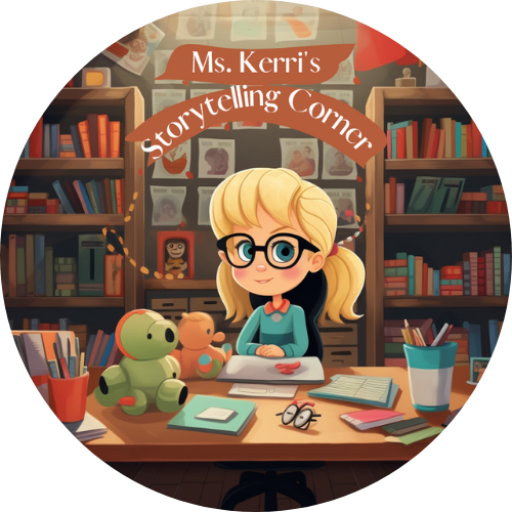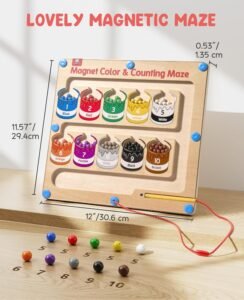I’ll never forget watching my friend’s four-year-old daughter confidently spell out “elephant” using wooden letters on the floor. No flashcards in sight, no frustrated tears – just pure concentration and joy. That’s when I realized there had to be something different about the Montessori approach to teaching letter sounds.
After years of watching children struggle with traditional phonics programs, I discovered that the Montessori method isn’t just another teaching technique – it’s a completely different philosophy. Instead of drilling sounds into children’s heads, it invites them to discover language naturally, using their hands, eyes, and ears together.
Why the Montessori Way Works So Well
Traditional phonics often feels like a memory game to children. They’re asked to memorize that “A says /a/” without really understanding why or how this connects to actual reading and writing. Montessori flips this completely.
The magic happens because children use multiple senses at once. When they trace a sandpaper letter while saying its sound, their brain creates stronger pathways than just looking at a flashcard. They control their own learning pace, so there’s no pressure or rushing. The materials are designed so children can catch their own mistakes – no adult hovering over them with corrections.
Most importantly, children start connecting sounds to real writing from day one. They’re not just memorizing abstract symbols; they’re using them to build actual words they care about.

Teaching Letter Sounds Starts with No Letters at All
This might sound backwards, but the best way to prepare children for letter sounds is to play with sounds without showing them any letters. Montessori calls this phonemic awareness helping children’s ears tune into the individual sounds that make up words.
Try playing “I Spy” with sounds instead of objects. “I spy something that starts with /m/… is it the mat or the cup?” Start with beginning sounds, then gradually move to ending sounds. This simple game trains their ears to hear the difference between sounds without the distraction of visual symbols.
The mystery bag game is another favorite. Fill a cloth bag with small household objects – a toy cat, a pen, a sock. Have your child pull out an item and identify its beginning sound. Start with continuous sounds like /m/, /s/, and /f/ because they’re easier for children to stretch out and hear clearly.
The Magic of Sandpaper Letters
Here’s where Montessori gets genius – children don’t just see letters, they feel them. Sandpaper letters are exactly what they sound like: letters cut from sandpaper and mounted on smooth wooden cards. When children trace these letters, they’re literally feeling the shape while hearing the sound.
The presentation is simple but powerful. Show them how to trace the letter ‘m’ with two fingers while saying “/m/” – not “em,” just the pure sound. Then invite them to try it themselves. The combination of movement, touch, and sound creates a memory that sticks.
Use what Montessori teachers call the three-period lesson. First, you name it: “This is /m/.” Then you ask them to recognize it: “Can you point to /m/?” Finally, you check if they can recall it: “What is this?” This progression ensures they truly understand before moving on.
Only introduce two or three letters at a time, and make sure they’re different in shape and sound – like /m/ and /s/. Too many at once overwhelms children, while too few bores them.

Building Words Before Writing
Before children can write letters with a pencil, they need to understand how sounds work together to make words. The Moveable Alphabet – a box of loose wooden letters – lets them construct words without worrying about perfect handwriting.
Place a small object next to the alphabet box, like a toy cat. Help your child say the word slowly: “/k/… /a/… /t/.” Then let them hunt for those letter sounds and build the word. If they spell it “kat,” that’s perfectly fine. They’re learning the concept of how sounds combine, and they’ll discover conventional spelling later when they start reading.
This approach removes the frustration of trying to form letters perfectly while also figuring out which sounds to use. Children can focus purely on the sound-to-symbol connection.
Making Sounds Concrete and Real
Instead of abstract drills, every sound in the Montessori approach connects to real objects that children can touch and manipulate. Create sound pouches – small bags filled with objects that start with the same sound. A /b/ bag might contain a ball, toy bear, and wooden block.
Children pull out an item, say its name clearly, and emphasize the beginning sound. The concrete objects make the abstract concept of “sounds” tangible and memorable. Miniature objects work especially well because children are naturally drawn to tiny things.
Writing in Sand Before Paper
Before introducing pencils and paper, let children practice letter formation in sand or salt trays. This removes all the pressure of making perfect letters while still building the muscle memory they need for writing.
Say the sound, demonstrate writing the letter in the sand, then let them practice while repeating the sound. There’s no eraser anxiety, no worried about making mistakes – just the satisfying feeling of their finger moving through the sand while connecting the sound to the shape.

When Things Don’t Go Smoothly
If children mix up sounds, go back to the sound games without any letters. Sometimes they need more time to develop their ear for phonics before adding visual symbols. Help them notice the difference in mouth movements: “Watch – /f/ bites the lip, but /v/ uses your voice!”
If they resist tracing sandpaper letters, try making the activity bigger and more physical. Draw large letters with chalk outside and let them walk along the shapes, or have them trace letters on textured surfaces like fabric or bumpy cardboard.
For children who aren’t blending sounds yet, start with compound words. “Cup… cake. Cupcake!” is much easier to understand than trying to blend individual letter sounds in words like “cat.”
Why This Approach Actually Sticks
The beauty of teaching letter sounds the Montessori way is that children become active discoverers instead of passive recipients. They’re not sitting still while someone talks at them – they’re moving, touching, building, and creating.
Every sound connects to meaningful writing from the beginning, so children see the point of what they’re learning. When they make mistakes, the materials help them figure out the correct answer themselves. No adult needs to swoop in with corrections.
Most importantly, there are no bribes or rewards needed. The satisfaction comes from within – from that “aha!” moment when they realize they can decode the secret code of written language. That internal motivation lasts far longer than any sticker chart ever could.
Children taught this way don’t just memorize letter sounds; they understand how language works. And that understanding becomes the foundation for a lifetime of confident reading and writing.


Ms. Kerri’s Corner provides a exciting virtual space for preschool learning. Through a variety of engaging activities, she exposes young minds to early math, literacy, science and social-emotional skills in a developmentally appropriate way. Centers for blocks, art, books and music allow children to explore hands-on learning at their own pace. Guided lessons subtly introduce number sense, letter sounds and narrative thinking. Careful observation gives insight into each child’s progress across domains. Viewers are also invited to participate, reinforcing that their ideas are valued. By making learning fun yet purposeful, Ms. Kerri lays the groundwork for future academic success while fostering creativity and imagination. Her program offers preschoolers valuable screen-based learning experiences.




